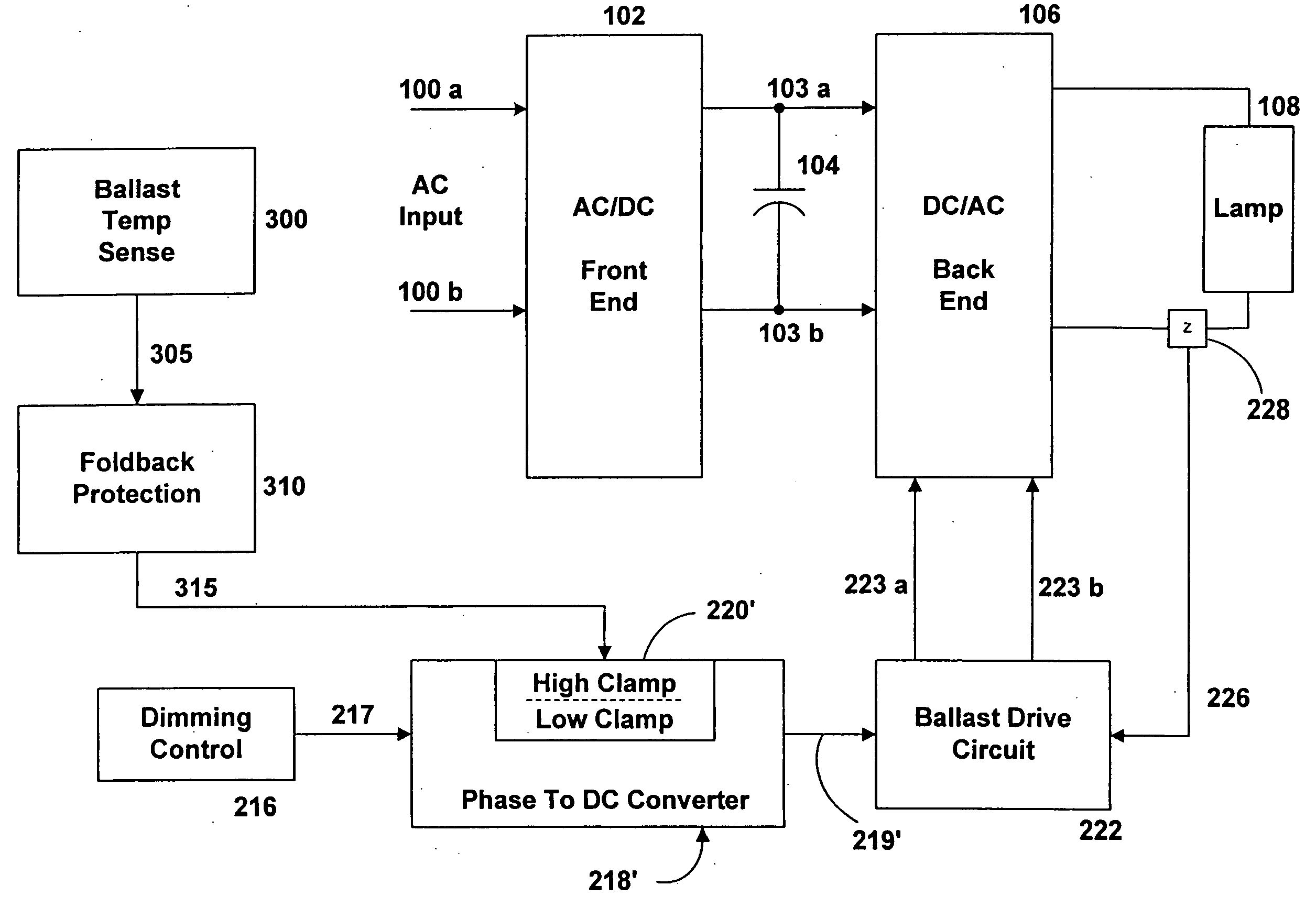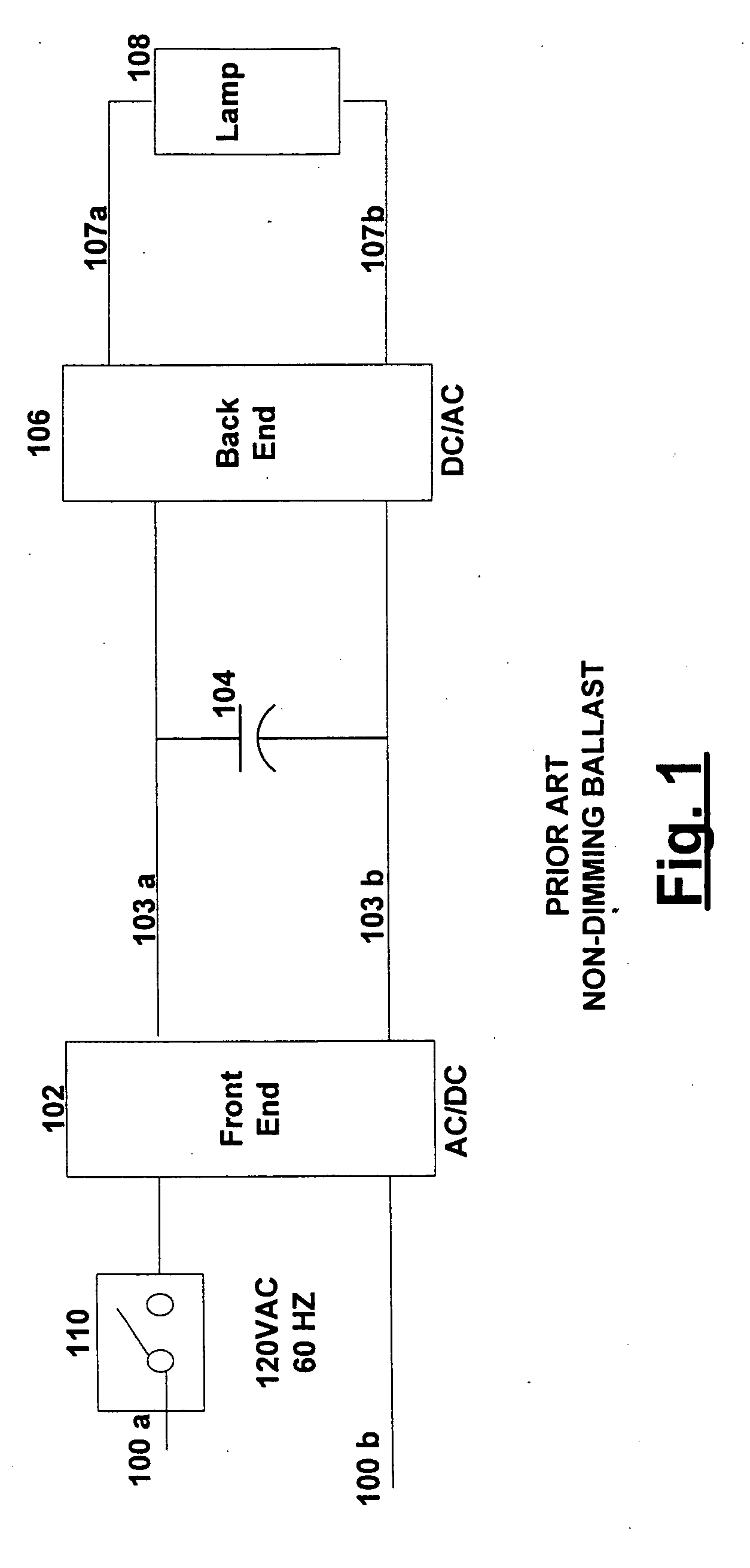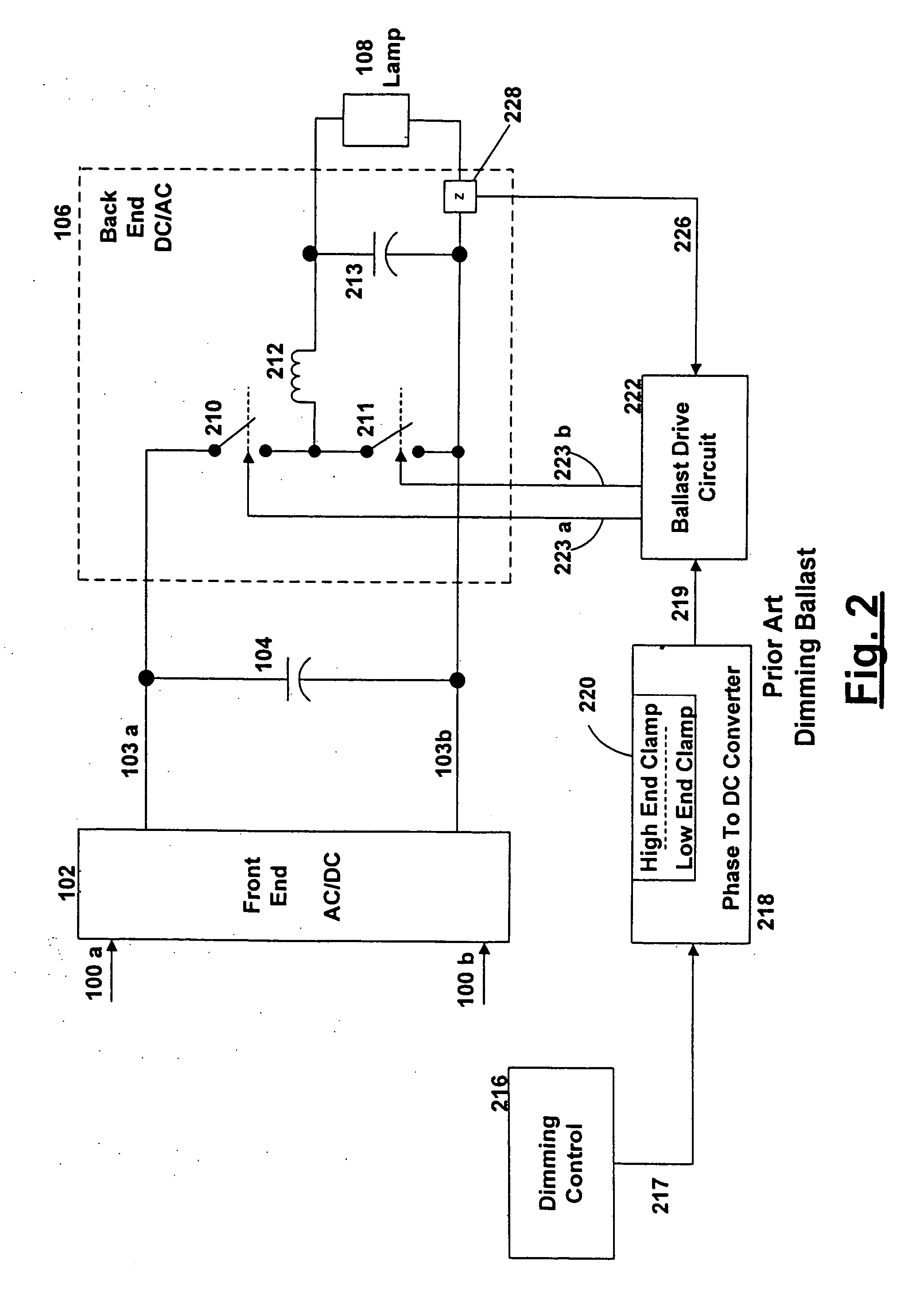Thermal protection for lamp ballasts
a technology for lamp ballasts and ballasts, which is applied in the direction of snap-action arrangements, process and machine control, instruments, etc., can solve the problems of improper heat sinking, inadequate ventilation of lighting fixtures, and overheating of ballasts
- Summary
- Abstract
- Description
- Claims
- Application Information
AI Technical Summary
Benefits of technology
Problems solved by technology
Method used
Image
Examples
Embodiment Construction
[0026] Turning now to the drawings, wherein like numerals represent like elements there is shown in FIGS. 1 and 2 functional block diagrams of typical prior art non-dimming and dimming ballasts, respectively. Referring to FIG. 1, a typical non-dimming ballast includes a front end AC to DC converter 102 that converts applied line voltage 100a, b, typically 120 volts AC, 60 Hz, to a higher voltage, typically 400 to 500 volts DC. Capacitor 104 stabilizes the high voltage output on 103a, b of AC to DC converter 102. The high voltage across capacitor 104 is presented to a back end DC to AC converter 106, which typically produces a 100 to 400 Volt AC output at 45 KHz to 80 KHz at terminals 107a, b to drive the load 108, typically one or more florescent lamps. Typically, the ballast includes a thermal cut-out switch 110. Upon detecting an over-temperature condition, the thermal cutout switch 110 removes the supply voltage at 100a to shut down the ballast. The supply voltage is restored if ...
PUM
 Login to View More
Login to View More Abstract
Description
Claims
Application Information
 Login to View More
Login to View More - R&D
- Intellectual Property
- Life Sciences
- Materials
- Tech Scout
- Unparalleled Data Quality
- Higher Quality Content
- 60% Fewer Hallucinations
Browse by: Latest US Patents, China's latest patents, Technical Efficacy Thesaurus, Application Domain, Technology Topic, Popular Technical Reports.
© 2025 PatSnap. All rights reserved.Legal|Privacy policy|Modern Slavery Act Transparency Statement|Sitemap|About US| Contact US: help@patsnap.com



